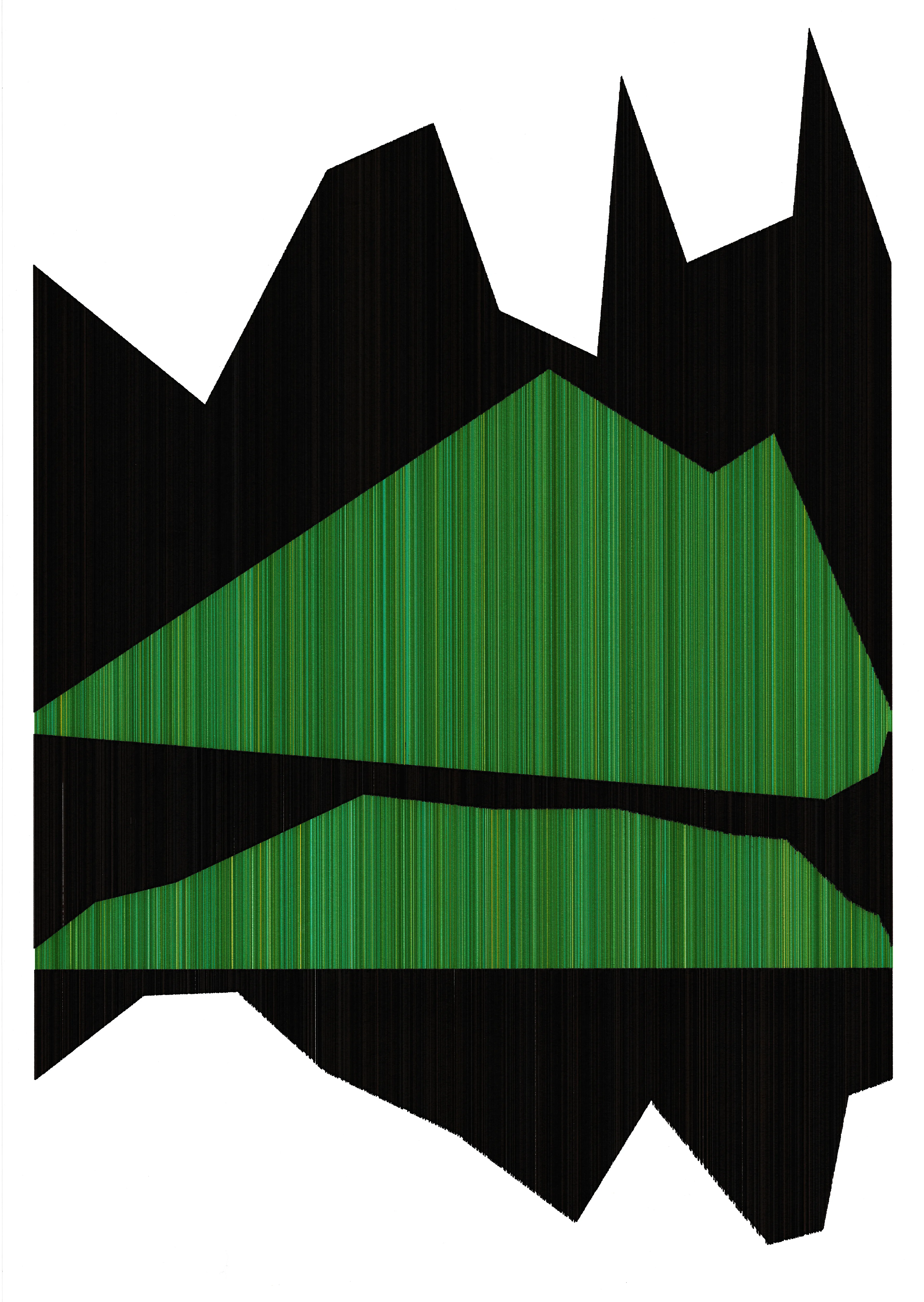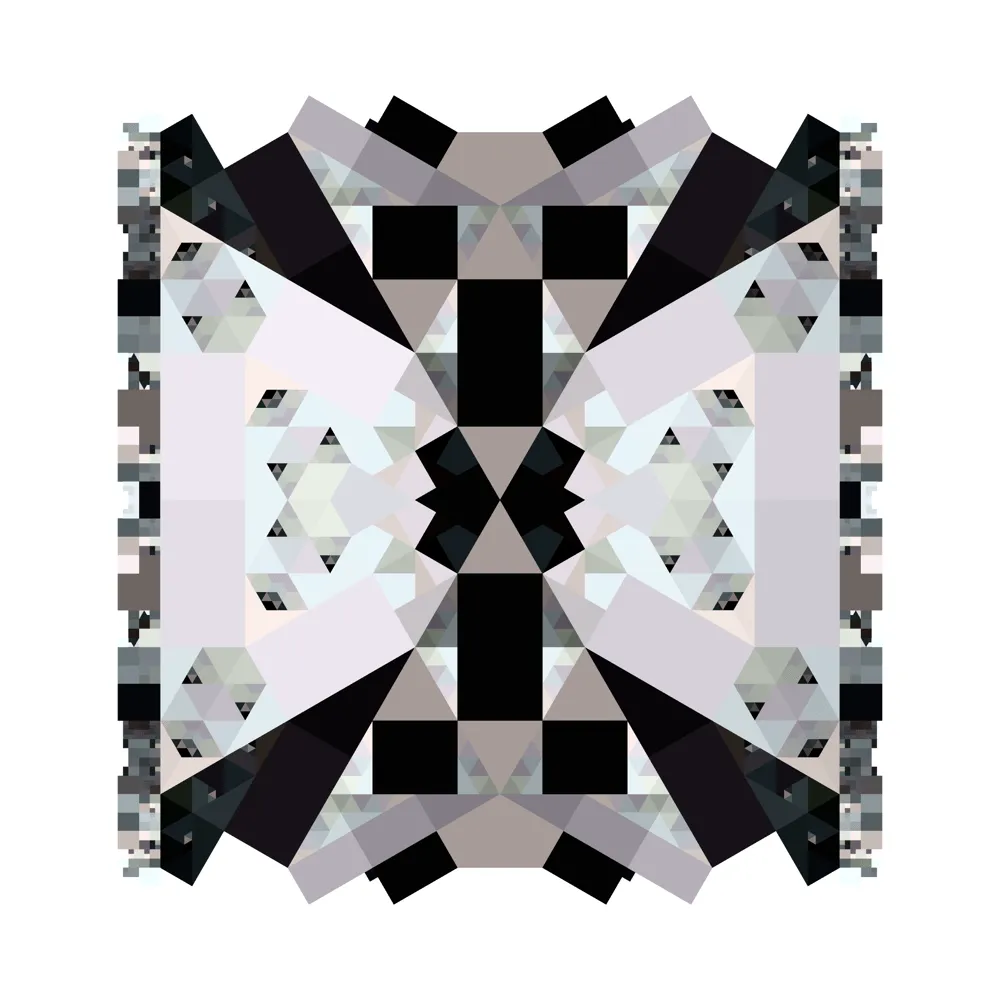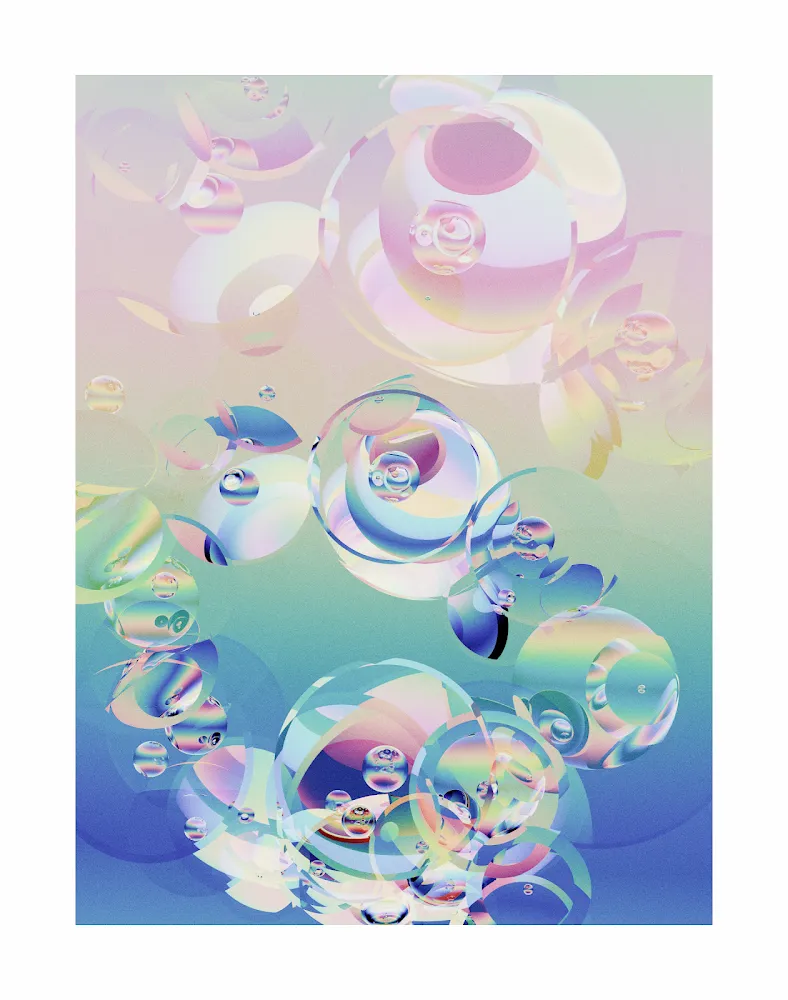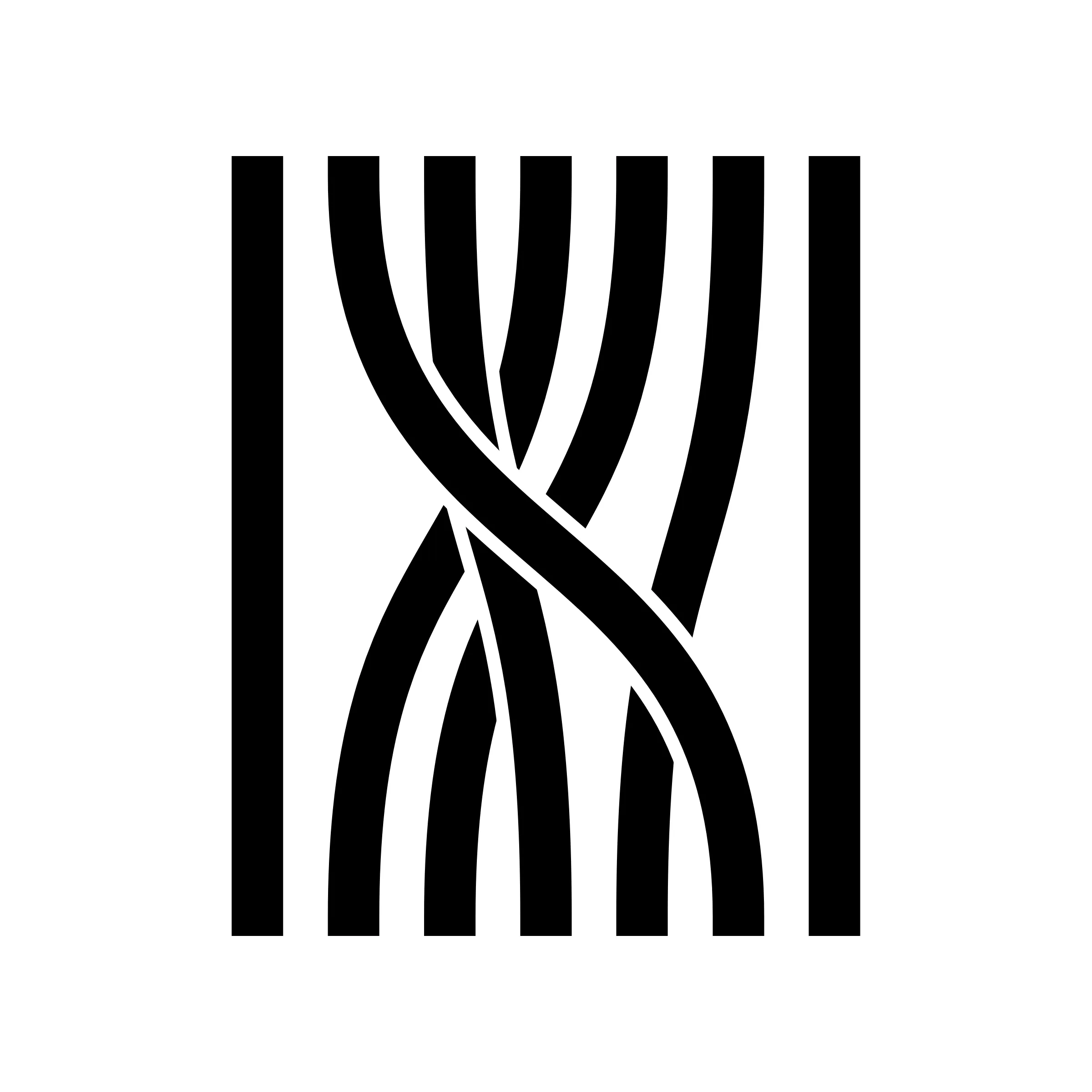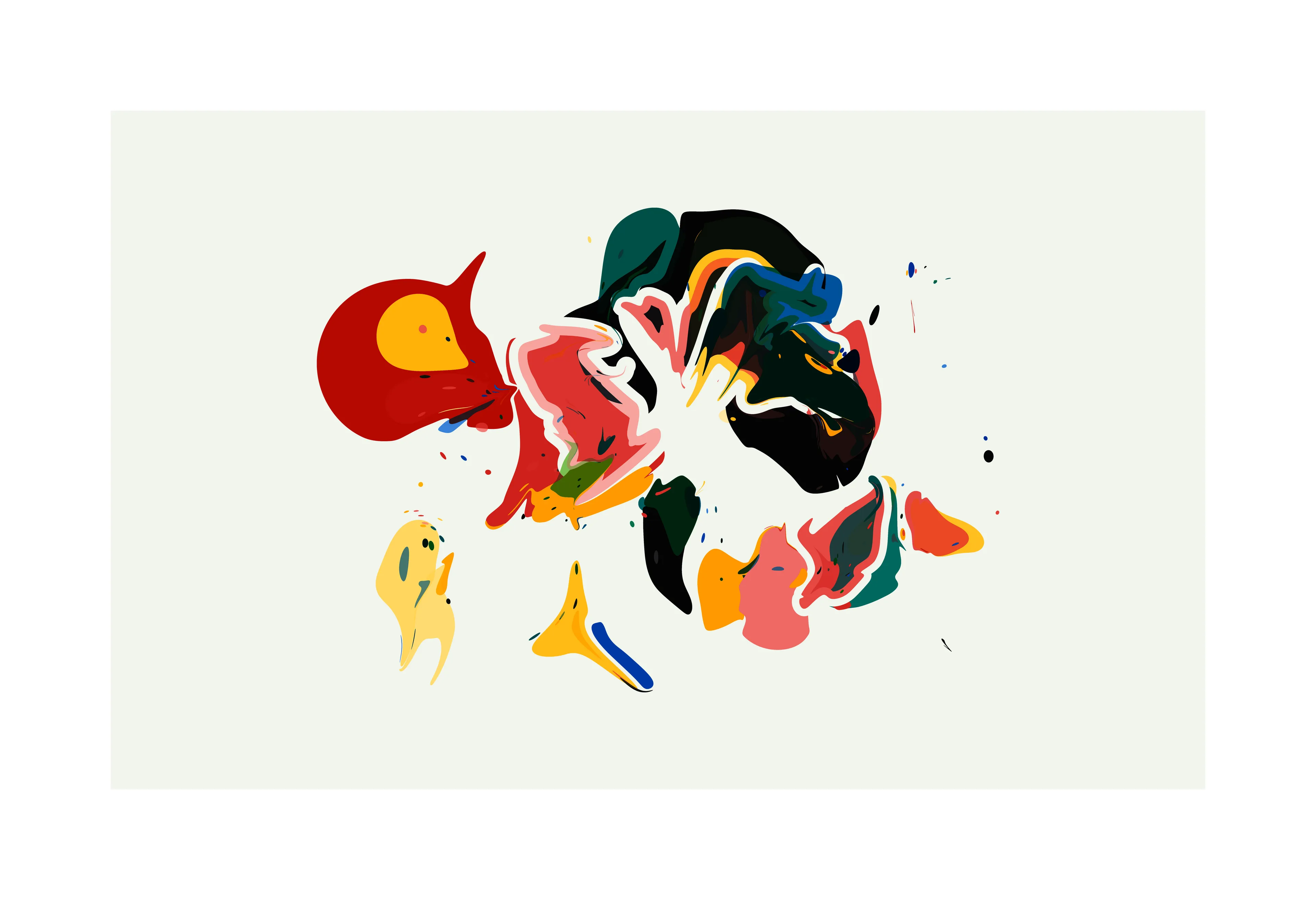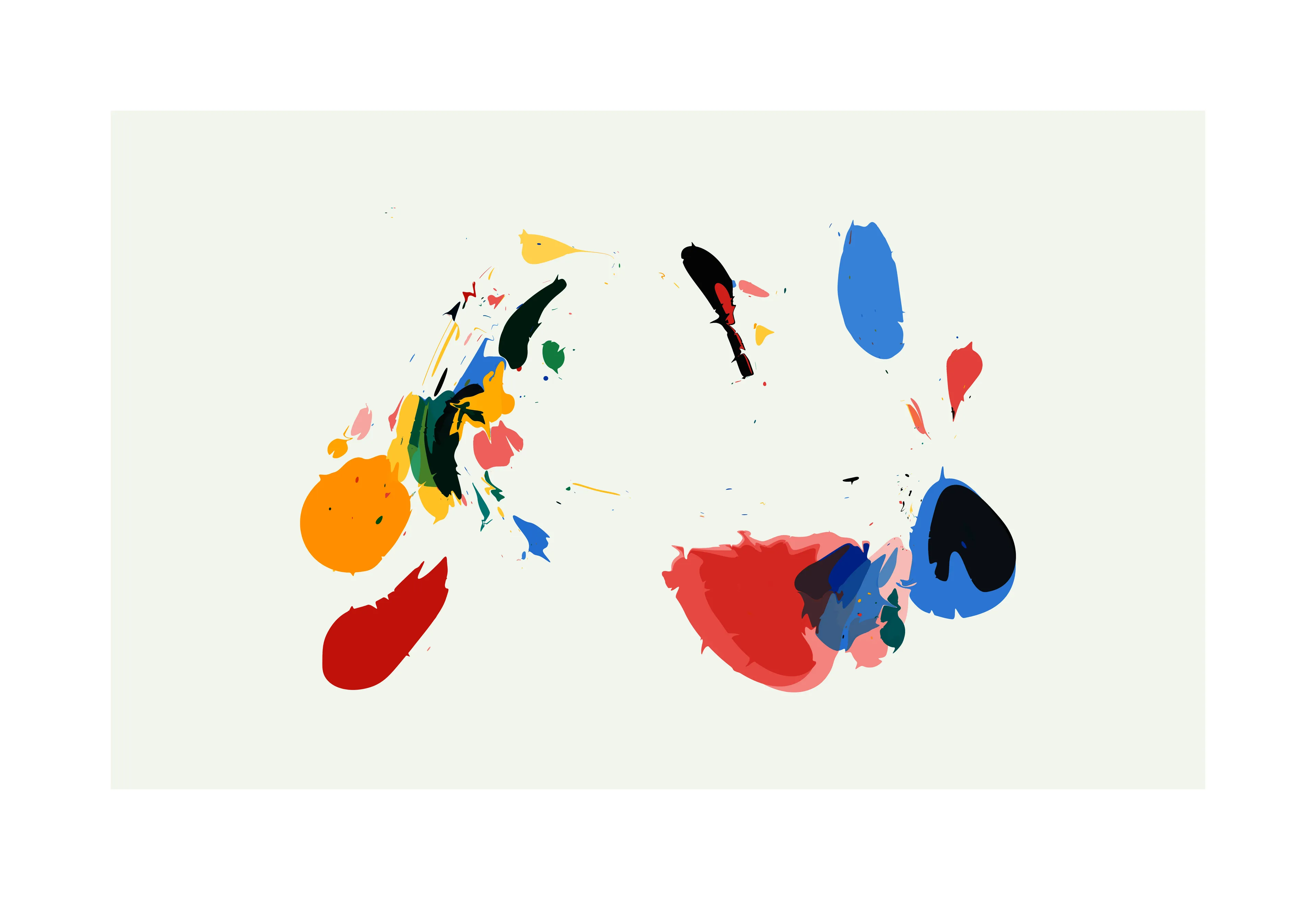Subscribe to get the latest on artists, exhibitions and more.
Chromatic Wanderlust with Lars Wander
Lars Wander in conversation with Mimi Nguyen.
Mimi Nguyen: Lars, what’s with the blobs?
Lars Wander: Haha. What is with the blobs? I guess there are a few ways to answer that.
My inspiration for the series came from the work of Mark Lovejoy, who creates and photographs beautiful mixtures of printing inks. At the same time, my blobs’ hard edges and uniform fills embrace a “digital” aesthetic, and are clearly not perfect renditions of ink mixtures. The use of a computer in creating artwork can be incredibly freeing, it’s a medium with unlimited potential for exploration, and I want my work to reflect that. If you’re going to emulate reality, why not break the rules a little?
On another level, my approach to the series was heavily influenced by the works of Zancan, and qubibi, who have created these wonderful, rich, and deeply varied generative systems. Starting from scratch on the p5.js web editor can be refreshing, but it makes it difficult to capture an identifiable style for yourself. This series will have 19 pieces, each with randomly arranged and perturbed blobs of paint. However, the underlying generative system I’ve created in service of this series has far more potential, and these 19 pieces are in a sense a debut of that.
On a more literal level, these blobs get their forms using a variation on the approach described in Mathematical Marbling, and their colors from simulated paint-mixing using spectral coefficients derived from Golden Heavy Body Acrylics and computed by the lab of Roy Berns.

Mimi Nguyen: So in paint-mixing, the process that takes place is subtractive - wavelengths are deleted from what we see because each paint will absorb some wavelengths that the other paint reflects. As a result, we are left with a lesser number of wavelengths remaining after the mixing process.
But mixing colours physically is not the same as mixing them digitally. For digital RBG, creating a new color is by an additive color mixing process that adds one set of wavelengths to another set of wavelengths. This is based on Grassmann’s laws from 1850s in terms of algebraic equations for the additivity in the color perception of light mixtures - composed of different spectral power distributions. How did you manage to shift from paint-mixing inspiration to digital generative art?
Lars Wander: You’re spot-on about the difference in the digital vs. physical color mixing. It also manifests itself in (subjectively) ugly ways: when mixing yellow and blue in sRGB space, you create gray, rather than green. sRGB is a natural colorspace for describing how to display digital images, but it’s pretty terrible for navigating the space between two colors. Once I realized that, I took a several-months-long journey into the rabbit hole of color spaces. That was just enough time to learn that I’m barely scratching the surface.
In the process, I came across the Mixbox paper. In short, they’ve developed a way to perform Kubelka-Munk (KM) color mixing using only 3-channel sRGB colors as input. KM theory was developed in the 1930’s, and computes the spectral distribution of light reflected from a pigment mixture by physically modeling the interaction of incoming light with pigment particles. Mixbox works by decomposing each 3-channel sRGB color into synthetic cyan, magenta, yellow, and white pigment concentrations, and performing KM mixing on those resulting pigments. By using 3-channel sRGB colors as input, their software can plug into any modern digital image/paint program. Their approach is brilliant, but unfortunately, I learned after reaching out to them that they don’t have a license for indie commercial use, meaning I can’t sell any works made using Mixbox. However, I wasn’t constrained to using only 3-channel sRGB as input, and was happy to use a more rudimentary approach at the expense of more computational power. I skip the step of converting from sRGB into pigments, and “draw” every element in terms of the underlying pigment concentrations. Each how you see me output is at one stage a 9-channel image, with each channel representing the concentration of a different Golden Acrylics paint, before it’s flattened into sRGB space using KM color mixing.
One wonderful thing about using computers to create art is that it gives the artist control over the output in a way that wasn’t possible before. However, this degree of control is in many ways also a curse: when it comes to mixing colors, there’s an infinite number of possible color spaces to use, yet only a tiny sliver of those produce aesthetically pleasing results. I suppose it’s ironic that despite all the many ways to represent color, I chose to do so in a way that’s physically grounded. At the same time, there’s something to be said about starting in a familiar place when exploring somewhere new.

Mimi Nguyen: Mark Lovejoy, who was your inspiration for the series, said once “I’m very interested in Carl Jung’s idea of the collective unconscious, and I see the images as a spontaneous recognition of forms, patterns, and energies that resonate with our psyches.” In this project, you are also exploring the minds' ability to pull figures, narratives, and personas from randomly arranged shapes and colors. How you see me?
Lars Wander: What blows my mind is how much of our perception is dependent on culture, from how we see color, to how we’re fooled by optical illusions. On one hand, it makes communicating visually feel kind of hopeless; I’ll never know how you see my artwork. On the other hand, it’s an opportunity to embrace that ambiguity.
When I first started sharing pictures from this series’ development, I was delighted in how many ways others interpreted the generated figures. Where some see aquatic life, others see dancers. Where I saw a fish wearing a crown, another saw a cat laying down. Yet, like the ink blots in a Rorschach test, the program that generates these has no notion of any of these forms. To me, it’s endlessly tempting to try and point out every little figure and form I see hidden in each composition. But, as I learned, it’s far more enjoyable to see what you, the viewer, pick out.
Mimi Nguyen: You’re a Google software engineer, what brought you to generative art in 2020?
Lars Wander: A few things at once in 2020, but perhaps the biggest of those was all the free time during the shelter-in-place period at the start of the pandemic. Around this time, I purchased a pen-plotter to keep me company at home. There is something so satisfying about seeing code re-interpreted by a machine and made physical. (Weirdly enough, an inkjet printer does the same, but holds none of the same magic). I made hundreds and hundreds of plots during this time, a few of which you can find on my Instagram.
At the start of the pandemic, I also transferred within Google to the Visual Analytics team, led by Wim De Pauw. This team builds bespoke visual interpretations of Google’s distributed systems when the scale and complexity of these systems exceed what you can monitor and observe with more traditional tools (e.g. using line charts & log messages). This has definitely had a synergistic effect with my generative art, because of how visually-oriented both my work and my art are. However, unlike my art practice at home, my work at Google needs to have a “correct”, and extremely literal interpretation. Not being bound to that for my personal practice is a real source of joy for me.
Mimi Nguyen: You’ve quoted your dad saying once “A computer always does exactly what you tell it to do.” But Alan Turing wrote in Computing Machinery and Intelligence (1950) that ”machines take [him] by surprise with great frequency.” How do you navigate randomness in genart and unpredictability of computers?
Lars Wander: I think you’ve hit the nail on the head with that juxtaposition – the fact that computers do exactly what we tell them to, yet still manage to surprise us is deeply magical to me. As much as possible, I want to share that feeling of magic through my artwork. Randomness in particular is something I often find very counterintuitive. Randomly drawing points on a canvas yields an image that’s almost aggressively unsurprising, even though it’s impossible to predict exactly what the final image will look like before it’s completed. If you randomly set the color of each pixel on your screen, you’ll almost certainly be left with an image resembling TV static, yet every image your screen will ever display is hidden somewhere in the space created by that process.
I guess that visually, randomness only becomes interesting when you impose some structure on it. Casey Reas illustrates this beautifully with his Process Compendium, where he lays out simple rules for the behavior of randomly arranged agents, and draws the results of their interaction. In a context like this, randomness breathes life into the static rules of the system.
At the same time, I think there’s room for generative art that explicitly avoids using any source of randomness, instead focusing on systems where all possible states can be enumerated. A great example is the work by Arjan van der Meij (a.k.a. dutchplottr). Take his New Matches series for example, where he enumerates and plots all possible configurations for N matchsticks. I’ve played with this genre myself a little as well, in my Rubber Band Folds series.

Mimi Nguyen: How do you see the future of machine-made creativity and art as digitalisation progresses?
Lars Wander: Haha, that’s a hard question. I think from the perspective of a machine-assisted creator, digitalization is a huge boon for creativity. The possibilities coming from the combination of automation and mind-boggling compute power are just beginning to be realized. However, so far, this potential has been locked behind a requirement for deep technical understanding. I think we see that changing though, with tools like DALL·E letting a wider range of creators take part in this new style of machine-assisted creation. At the same time, these tools raise really challenging questions about the nature of creativity to begin with. I don’t know if art will provide any answers, but it definitely gets us thinking.
Curator's note:
Toni Marinara: ‘how you see me’ is the product of over 6 months of meticulous and soulful R&D. Last fall, colorful splats of paint forming abstract figures stopped me in my tracks. I had discovered the work of Lars Wander. I commissioned Lars to create a piece using this same algorithm. Gentle Dissolution 1/N was born: a work that took these dancing bodies of color a step further and now hangs in my home.
The series did not stop here. Lars challenged himself to keep pushing the output, evolving the splats into the complex and lifelike forms present in how you see me.
The precision of Lars’ work is no surprise given his background; however, its beauty lies in the air of freedom that accompanies the technical. “How you see me” is a culmination of the artists’ strengths. With this collection, he further establishes the unwavering beauty and sophistication of his artwork.
Lars Wander is a computer artist, born in Germany, and living in NYC. His visual artwork follows his interests in perception, generative patterns, and computational systems. He’s been writing programs to explore complexity for well over a decade, and began publishing his generative artwork in 2020. During the day, Lars works at Google writing visualization software to understand the dynamics of global-scale storage systems, his scientific research was published in IEEE, and in the evenings he makes electronic music.
Toni Marinara is a dedicated crypto-art collector, artist representative, and attorney based in London by way of New York. As an artist representative for ARTXCODE, he is committed to curation and nurturing the longevity of generative artists’ careers. Additionally, Toni is part of the founding team of Artchild, a collaborative community-driven art platform launching in 2022.
Mimi Nguyen, Art + NFT at verse.works. She is a doctoral researcher and teaches at Imperial College London, Faculty of Engineering, where she leads Mana Lab, a “Future of work in Blockchain” research group, and at Central Saint Martins, University of Arts London together with CSM NFT Lab. Her previous research on creativity and human-computer interaction has been published by Cambridge University Press, Design Studies, Design Research Society, TIME magazine, and ACM Association for Computing Machinery.
Toni Marinara had nominated Lars Wander for Verse's exhibition 'Chromatics', showcasing his series how you see me.
See the works on Thursday 18 August at 6:00PM BST | 1:00PM ET.
Mimi Nguyen
Mimi is a Creative Director at verse. She is a assistant professor at Central Saint Martins, University of Arts London where she leads the CSM NFT Lab. Her background is New Media Art, having previously studied at the Berlin University of the Arts (UdK) and Academy of Fine Arts in Warsaw. She now also teaches at Imperial College London, Faculty of Engineering, where she leads Mana Lab - a “Future...
Lars Wander
Lars Wander is a computer artist, born in Germany, and living in NYC. His visual artwork follows his interests in perception, generative patterns, and computational systems. He’s been writing programs to explore complexity for well over a decade, and began publishing his generative artwork in 2020.
During the day, Lars works at Google writing visualization software to understand the dynamics of...
Toni Marinara
Toni Marinara is a dedicated crypto-art collector, artist representative, and attorney based in London by way of New York.
As an artist representative for ARTXCODE, he is committed to curation and nurturing the longevity of generative artists’ careers. Additionally, Toni is part of the founding team of Artchild, a collaborative community-driven art platform launching in 2022.
